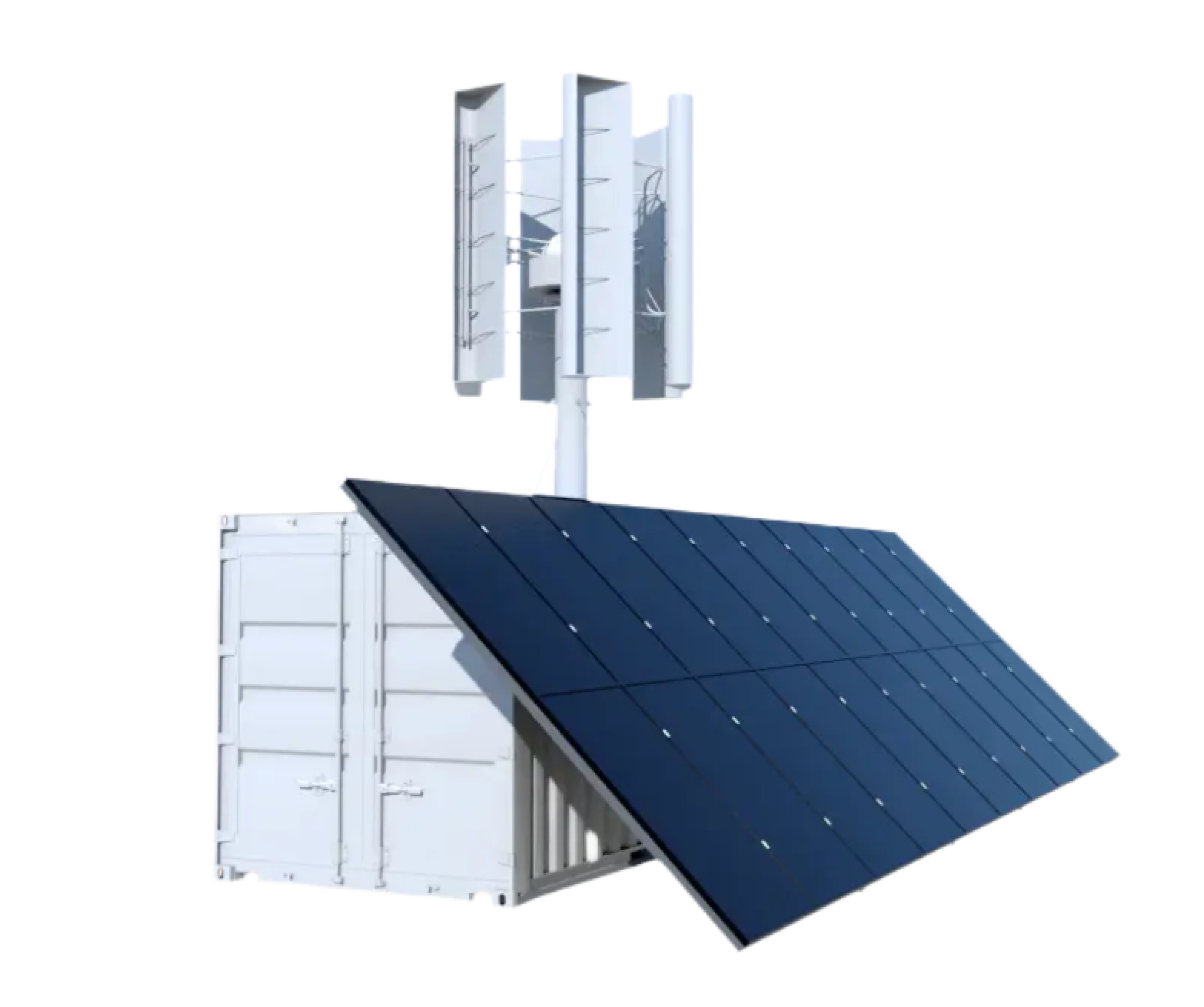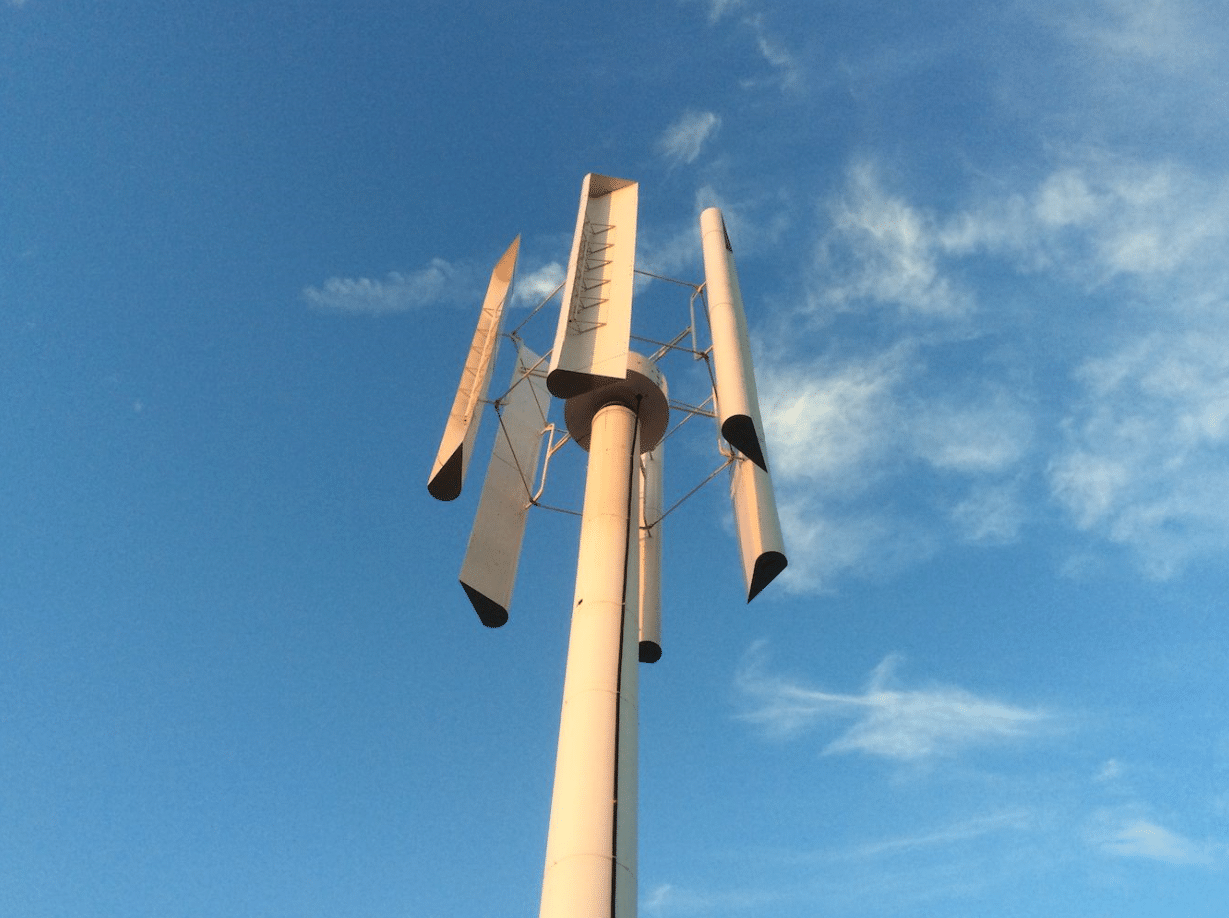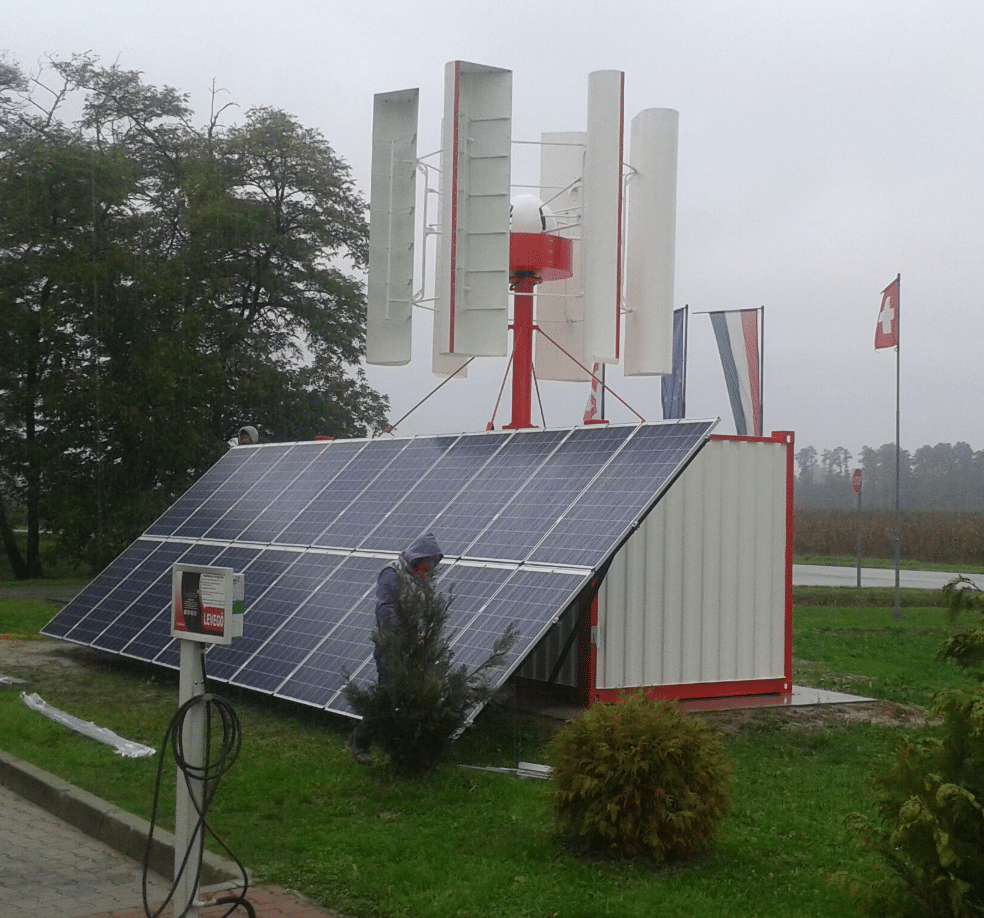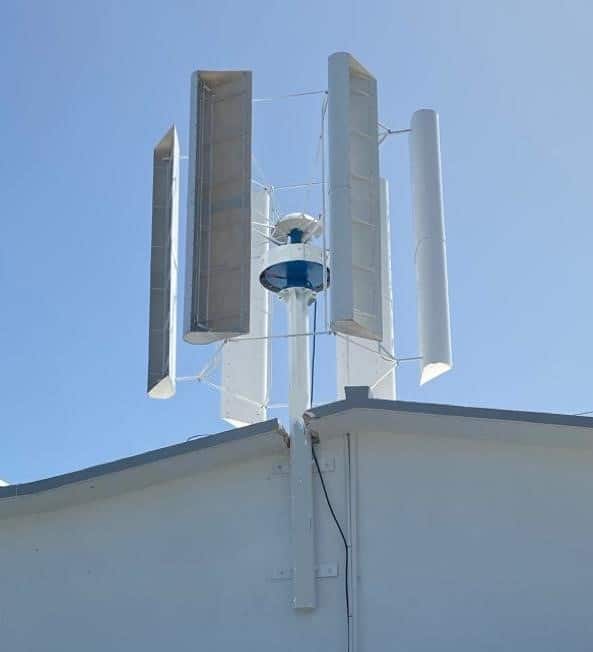Vertical axis slow rotation generator
The Vertica Wind SRG wind turbine system was created in 2014. As a result of the development, this extremely low-noise (silent), environmentally friendly, cost-effective, high-capacity, long-life wind generator requiring no maintenance cycles and capable of generating electric power starting from a low wind speed of 0.5 m/s but also working safely in a wind storm has become a marketable product thanks to its unique installation and parameters adjusted to the environmental conditions.
Fields of application
-
- As self-standing power generating equipment for detached houses or residential developments
- Power generation equipment for SMEs
- To meet the power needs of isolated industrial or agricultural production facilities with no infrastructure
- Mobile power generating equipment for military or disaster management tasks
- The power generation equipment for boats and water facilities
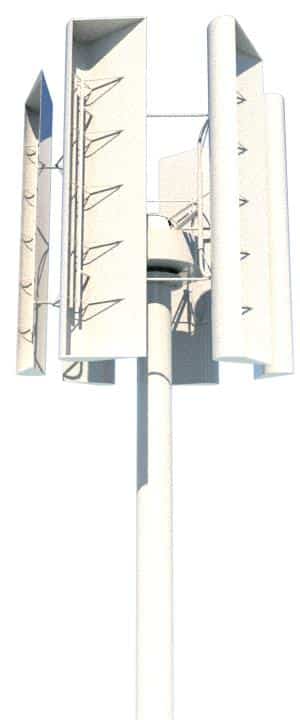
General description
-
- Independent power supply for families and businesses
- Power generation starts at a wind speed of 0.5 m/s (1.8 km/h = 1.12 mph) and is guaranteed even at a stormy wind speed of 50 m/s (180 km/h = 112 mph)
- Wide product range tailored to individual needs, from 1.5 to 50 kW
- 30-year planned service life
- Unique value for money
- Quick return on investment, between 8-12 years
- Innovative, vertical axis, slow-speed generator
- Silent operation and attractive design in both natural and urban surroundings.
- Minimal environmental impact, without CO2 emissions
- Installation adapted to the environmental conditions (on pole or roof)
What makes Vertica Wind SRG the best?
Clear technical solutions | Tested, operational status | Test data corresponding to data measured in practice | Run time without malfunction | Performance optimization through installation and setting options adapted to the local conditions | Possibility for further innovation of already installed and operating equipment
Additional advantages
-
- An environmentally friendly product through the application of modern materials, devices and technology
- Complies with the quality standards applied during production and commissioning
- Suitable for both off-grid and on-grid operation
- By combining other alternative energy sources, electrical power can be generated in accordance with individual needs (hybrid)
- In addition to energy production, it can yield substantial revenue
- With its modern design and colors, it easily fits into both urban and natural surroundings
Technical specification
-
- Off-grid, i.e. designed to recharge a set of batteries: 12-24-48 V
- High-voltage mode up to 800V
- Regenerative type with 1 or 3 phases. Takeover of generated power is required by law, using two-directional electricity meter, with annual reading and settlement.
- Combined version: for the purposes of the highest safety and independence, the feed-back unit can be extended with battery charger and battery pack to overcome power outages and shorter periods of calm weather
- Capacity levels: 1.5 kW-50 kW (net, 230V or 110V alternating current based on capacity depending on inverter, as required)
- Starting wind speed: 0.5 m/s (1.8 km/h = 1.12 mph) due to the special design of the coils, it starts with a “breeze,” and, for the same reason, there is no resonance
- Rated capacity wind speed: 8.3-10 m/s (36 km/h = 22.37 mph)
- Survival speed: virtually unlimited (as due to its physical structure, it cannot accelerate above a certain rpm, it does not need to be slowed down, rotating and generating power in storms as well)
- Revolutions per minute: 6-50 rpm, work phase 25-40 rpm (revolutions per minute)
- Wind direction: the equipment can receive wind from any direction, both fast-changing continental winds and gusts and the turbulent wind generated by terrain objects
- Can be installed in groups of 3 to reinforce each other
- Number of blades: 5-8
- Width/Height: widely customizable, e.g.: 2.40 x 3.60 m (7.87 x 11.81 feet)
- Drive: direct drive without engine
- Coils: coils with unique technical solutions
- Magnets: permanent (super) magnets
- Brakes: in working condition, electronic work load, during assembly, manual or electronically operated drum/disc brakes
- Regulation: inverter-dependent charging control electronics supplied with the system
- For the event of a power outage, a galvanic isolator will be built in to avoid electric shock
- Noise: 40 dB (lower than the surrounding environmental noises e.g. the sound of the wind – virtually inaudible)
- In modular system, located side by side or above each other to multiply performance
- Mounting height: accident zone, i.e. above 3 m, but it does not require a great height, or a costly pole, requires no building permit, can be easily mounted on the roof as well
- Weight: between 180-240 kg [397-529 lbs] (5-18 kW), made of fully recyclable materials
- Maintenance: low requirement with only an annual inspection
- Service life: over 30 years (no wear parts apart from the bearings) blades with sea-proof fiberglass cloth and epoxy, magnets with nickel-copper-nickel coating, metal parts are galvanized, flexible, treated with impact-resistant and UV resistant coating, stainless steel fasteners, coils cast in resin, electronics in standard shock-proofed outdoor box.
- Pole module: arbitrary, according to structural engineering regulations, recommended dimension: 6-18 m (19.7 – 59 feet), steel, reinforced concrete or metal posts
The electrical system of the Vertica Wind SRG wind turbine
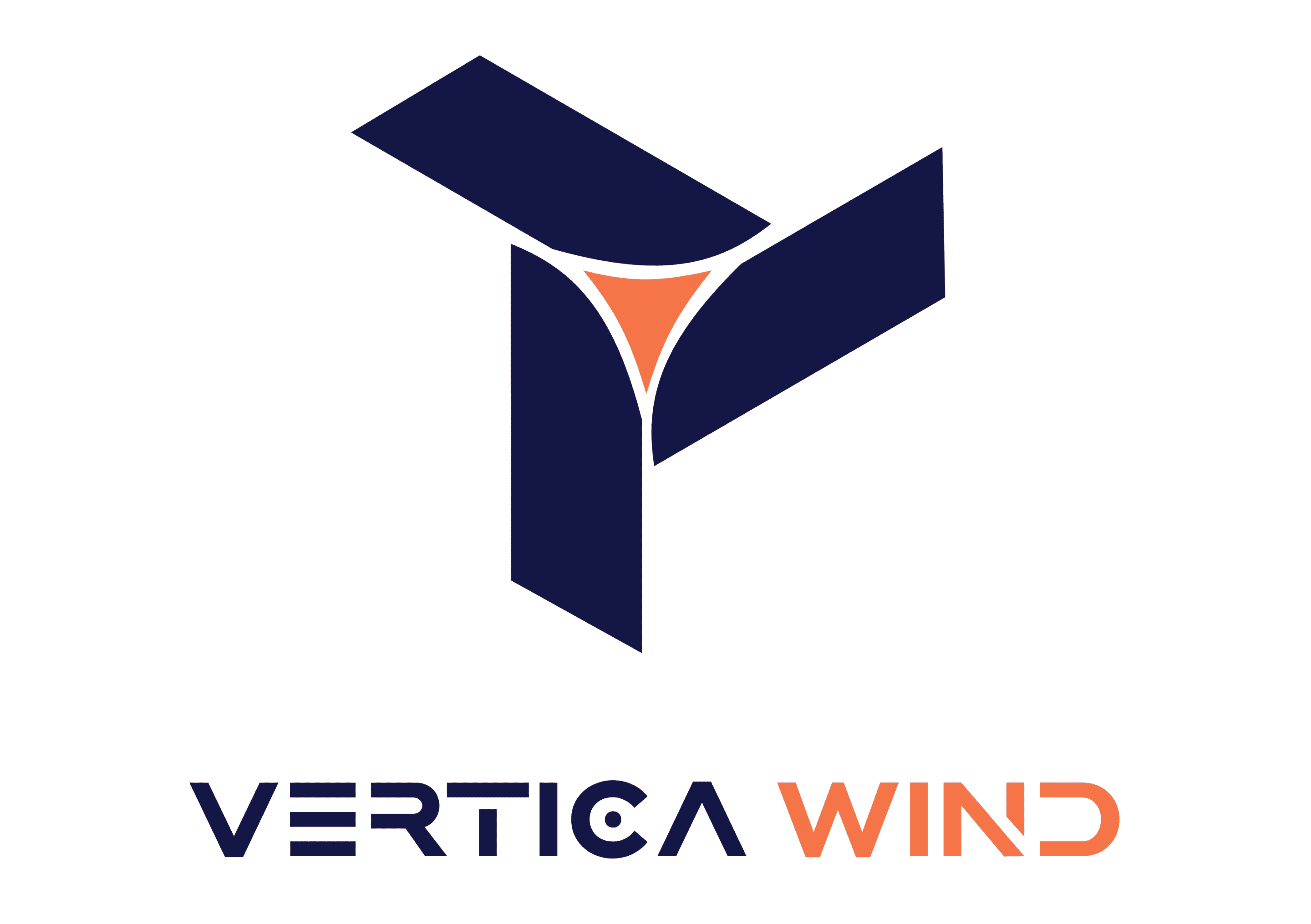
Off-grid equipment
In this case, the equipment is in “off grid” mode. In this mode, the system charges batteries. It produces alternating current from the batteries with the help of an inverter. With the “excess current” produced with this application and stored, the equipment can supply power consumers even in the case of calm weather or a power failure.

Regenerative equipment
The regenerative equipment is directly connected to the electricity supplier’s grid. The unit feeds back the electric current produced at the site of consumption into the grid and the required quantity can be used from the grid as usual. In such cases, the regenerated energy and the energy used is recorded by a meter that can measure in both directions and invoices the total annually. The supplier will then pay for any extra energy generated (only the price of electricity but not the system usage fee).

It is especially recommended
-
- in places where the electricity supply is not installed, unstable, or difficult to install
- for environmentally conscious consumers who wish to be self-sufficient
- for boats and as power generation equipment for water facilities
- in the event of off-grid equipment, the customer’s electric network can be connected to the operator’s grid after disconnecting the off-grid equipment
